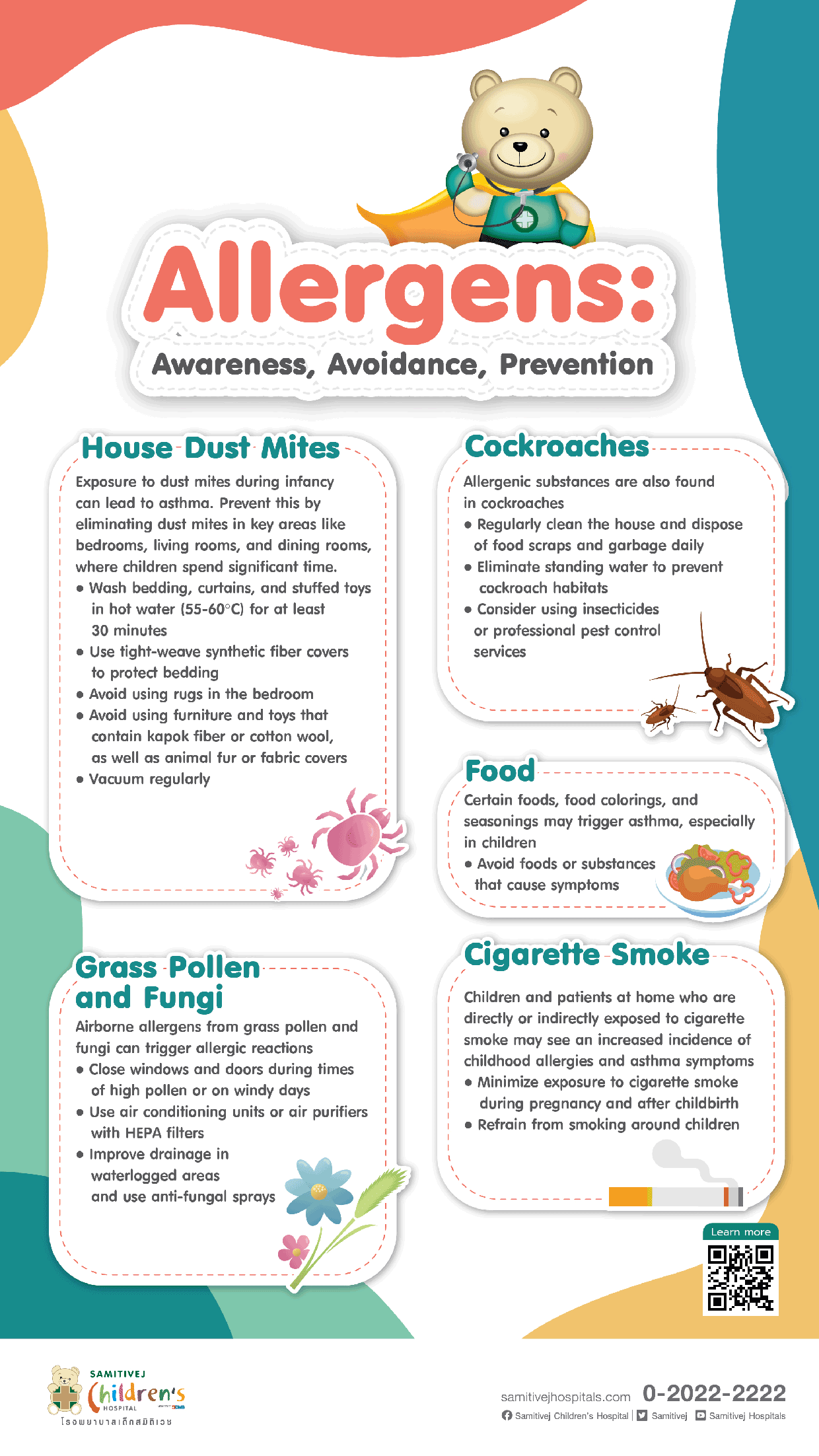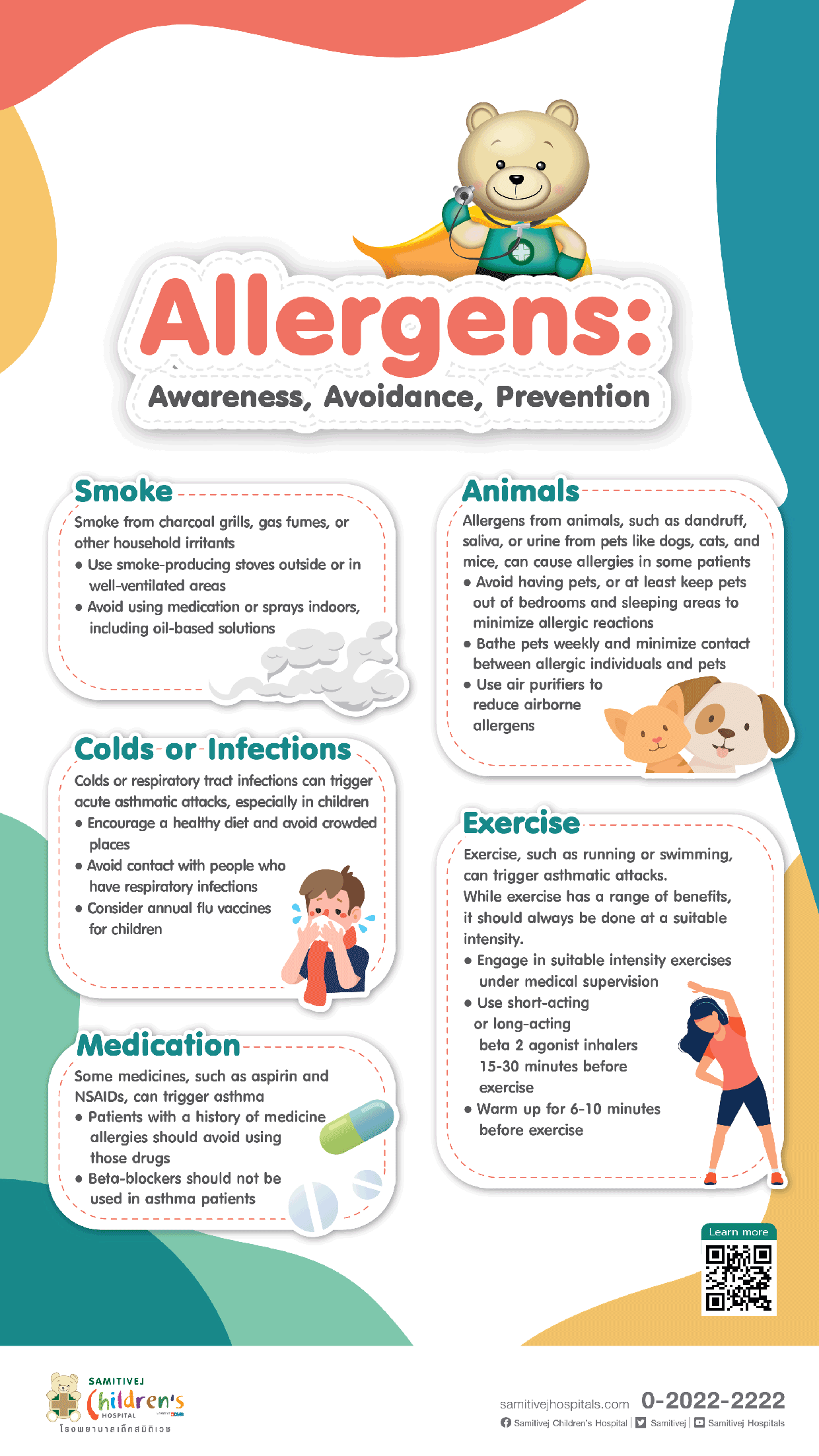Respiratory System Symptoms include runny nose, sneezing, nasal congestion (commonly known as hay fever), or may be accompanied by more severe symptoms, such as coughing and shortness of breath, which is also a symptom of asthma.
Most respiratory system allergies are caused by allergens in the air. In Thai people, the main cause is dust mites, followed by cockroaches, and the fur and dander of pets, such as cats and dogs, as well as plant pollen and mold in the air.
In some children, food allergies, such as to cow’s milk or eggs, may exhibit as symptoms of the respiratory system, such as wheezing and/or shortness of breath.
Skin These include hives (urticaria), eczema or allergic contact dermatitis. The main causes of hives are usually allergies to food and medications. Eczema usually occurs in children who have a family history of the allergy, and may be due to food allergies, such as to cow’s milk or eggs, causing a rash which normally occurs on the cheeks in small children or on the flexure area in older children.
Digestive System Symptoms include abdominal pain, vomiting, diarrhea and rectal bleeding, and are usually caused by food allergies.
Multiple Systems (Often accompanied by severe symptoms) Some patients have life threatening allergic reactions, with symptoms such as breathlessness or shortness of breath, hives, and the body going into shock, and these may even affect multiple organ systems. They may even be so severe as to cause death after eating certain foods, such as shrimp or peanuts, or after receiving medications such as penicillin.



